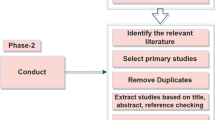Abstract
The IEEE 802.11 DCF and EDCA mechanisms based on CSMA/CA are the most widely used random channel access mechanisms in wireless mesh networks (WMNs), but unfortunately these cannot effectively eliminate hidden terminal and exposed terminal problems in multi-hop scenarios. In this paper, we propose a set of efficient multi-radio multi-channel (MRMC) assignment, scheduling and routing protocols based on Latin squares for WMNs with MRMC communication capabilities, called “M4”, i.e., the Multiple access scheduling in Multi-radio Multi-channel Mesh networking. M4 uses nodal interference information to form cliques for inter-cluster and intra-cluster inWMNs, and then applies Latin squares to map the clique-based clustering structure to radios and channels for communication purposes. Then, M4 again applies Latin squares to schedule the channel access among nodes within each cluster in a collision-free manner. From a systematic view, we also design the corresponding MRMC routing to support M4 communication. Extensive simulation results show that M4 achieves much better performance than IEEE 802.11 standards and other channel access control protocols.












Similar content being viewed by others
References
IEEE Std 802.11e. (2003). Wireless medium access control (MAC) and physical layer (PHY) specifications: Medium access control (MAC) enhancements for quality of service (QoS). Technical report, IEEE, 2003.
IEEE Std 802.11. (2007). IEEE standard for information technology-telecommunications and information exchange between systems-local and metropolitan area networks-specific requirements— Part 11: Wireless LAN medium access control (MAC) and physical layer (PHY) specifications. Technical report, IEEE, 2007.
Qiu, L., Zhang, Y., Wang, F., Han, M. K., & Mahajan, R. (2007). A general model of wireless interference. In ACM MOBICOM’07 (pp. 171–82).
Aryafar, E., Gurewitz, O., & Knightly, E. W. (2008). Distance-1 constrained channel assignment in single radio wireless mesh networks. In IEEE INFOCOM’08 (pp. 762–770).
Ramachandran, K. N., Belding, E. M., Almeroth, K. C., & Buddhikot, M. M. (2006). Interference-aware channel assignment in multi-radio wireless mesh networks. In IEEE INFOCOM’06 (pp. 1–12).
Chen, G., Nocetti, F., Gonzalez, J., & Stojmenovic, I. (2002). Connectivity based k-hop clustering in wireless networks. In 35th annual Hawaii international conference on system sciences (pp. 2450–2459).
Karp, R. (1972). Reducibility among combinatorial problems. In Symposium on the complexity of computer computations (pp. 85–103). Plenum Press.
Liu, Q., Jia, X., & Zhou, Y. (2011). Topology control for multi-channel multi-radio wireless mesh networks using directional antennas. Wireless Networks, 17(1), 41–51.
Mao, X., Li, X., & Dai, G. (2011). Flow admission control for multi-channel multi-radio wireless networks. Wireless Networks, 17(3), 779–796.
Alicherry, M., Bhatia, R., & Li, L. (2005). Joint channel assignment and routing for throughput optimization in multi-radio wireless mesh networks. In ACM MobiCom’05 (pp. 1960–1971).
Lim, S., Ko, Y., Kim, C., & Vaidya, N. (2011). Design and implementation of multicasting for multi-channel multi-interface wireless mesh networks. Wireless Networks, 17(4), 955–972.
Denes, J. & Keedwell, A. D. (1974). Latin squares and their applications. London: Academic Press.
Akyildiz, I. F., Wang, X., & Wang, W. (2005). Wireless mesh networks: A survey. Computer networks, 47(4), 445–487.
Gupta, P. & Kumar, P. R. (2000). The capacity of wireless networks. IEEE Transactions on Information Theory, 46, 388–404.
Xu, K., Gerla, M., & Bae, S. (2002). How effective is the IEEE 802.11 RTS/CTS handshake in ad hoc networks? In IEEE GLOBECOM’02 (pp. 72–76).
Laywine, C. E. & Mullen, G. L. (1998). Discrete mathematics using Latin squares. Hoboken, NJ: Wiley.
Bao, L. (2004). MALS: multiple access scheduling based on Latin squares. In IEEE MILCOM’04 (pp. 315–321).
Wu, D., Bao, L., Du, M., & Li. R. Design and evaluation of localization protocols and algorithms in wireless sensor networks using UWB. In IEEE IPCCC’08 (pp. 18–25).
Gupta, R. & Walrand, J. (2004). Approximating maximal cliques in ad-hoc networks. In IEEE PIMRC’04 (Vol. 1, pp. 365–369).
Scalable Network Technologies. http://www.scalable-networks.com. QualNet Network Simulator.
Naveed, A., Kanhere, S. S., & Jha, S. K. (2007). Topology control and channel assignment in multi-radio multi-channel wireless mesh networks. In IEEE MASS’07 (pp. 1–9).
Wu, D., & Bao, L. (2010). Grid-based channel resource allocation and access scheduling using Latin squares in wireless mesh networks. In IEEE WOWMOM’10 (pp. 562–567).
So, J. & Vaidya, N. H. (2004). Multi-channel MAC for ad hoc networks: Handling multichannel hidden terminals using a single transceiver. In ACM MOBIHOC’04 (pp. 222–233).
Wu, D., Luo, J., Li, R., & Regan, A. (2011). Geographic load balancing routing in hybrid vehicular ad hoc networks. In IEEE ITSC’11 (pp. 2057–2062).
Perkins, C., Belding-Royer, E., & Das, S. (2003). RFC 3561—Ad hoc on-demand distance vector (AODV) routing. Technical report, internet engineering task force (IETF).
Acknowledgments
We would thank the anonymous reviewers for their insightful comments. This work was sponsored in part by the Raytheon Company under Grant No. RC-42621.
Author information
Authors and Affiliations
Corresponding author
Rights and permissions
About this article
Cite this article
Wu, D., Yang, SH., Bao, L. et al. Joint multi-radio multi-channel assignment, scheduling, and routing in wireless mesh networks. Wireless Netw 20, 11–24 (2014). https://doi.org/10.1007/s11276-013-0568-y
Published:
Issue Date:
DOI: https://doi.org/10.1007/s11276-013-0568-y




